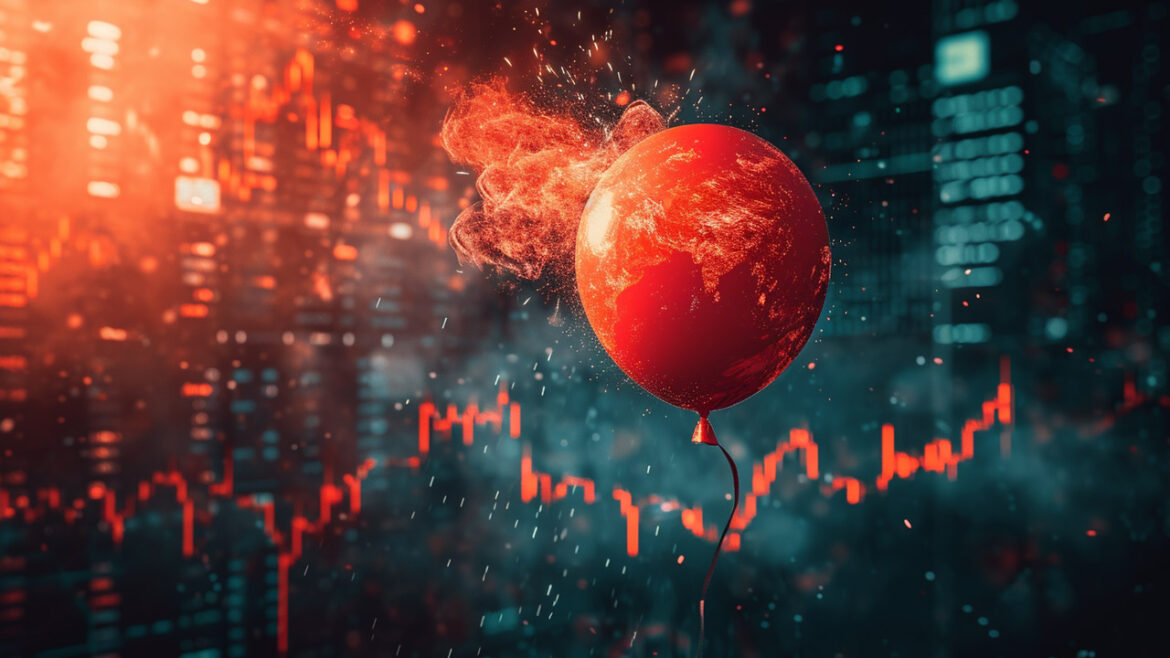Gold has all the potential to go unprecedentedly high. But silver will be gold on
Site:
Precious metals news
The LBMA Precious Metals Market Report for Q4 2023 highlights the heightened interest and speculation around the future prices of gold and silver. Amid various predictions, some reaching as high as $10,000 for gold and $300 for silver by the end of the decade, the LBMA gold price notably achieved a record high of $2,078.40 on December 28. These optimistic forecasts are partly driven by gold’s appeal as a safe haven, especially following the Israel/Palestine conflict outbreak in early October.
There’s been lots of talk within the Biden Administration about forgiving student loan debt. But with chaos widely reported at companies that service student loans, some debtors can’t even figure out how much they owe — much less actually pay down their balances.
With consumer debt reaching record levels, the Federal Reserve contemplating rate cuts in 2024, and post-Covid inflation still yet to reach its peak, a storm is indeed brewing.
 Gold Prices Dip as Strong Retail Sales Data Reduces Likelihood of Fed Rate Cut
Gold Prices Dip as Strong Retail Sales Data Reduces Likelihood of Fed Rate CutJan 17, 2024 - 10:15:45 PST
The gold price (XAU/USD) is under pressure following the release of strong U.S. Retail Sales data for December, which exceeded expectations. Retail sales increased by 0.6%, surpassing the forecasted 0.4% and the previous month's 0.3%. Excluding automobiles, sales rose by 0.4%, also exceeding predictions. This robust economic data reduces the likelihood of an interest rate cut by the Federal Reserve (Fed) in March. Further, a hawkish statement from Fed Governor Christopher Waller has raised doubts about a potential rate cut, as Fed policymakers favor keeping interest rates high, given the uncertainty about inflation returning to the 2% target.
At this year's World Economic Forum in Davos, Switzerland, while discussions include climate change, wars, and artificial intelligence, the most debated topic is the potential actions of the Federal Reserve regarding interest rates in 2024. The high stock prices of many companies present at the forum are partly due to the expectation of several rate cuts this year, which would lower financing costs and potentially increase return on investment. In December 2023, the Federal Reserve maintained its key interest rate at 5.25% to 5.50% for the third consecutive time but indicated at least three quarter-point rate cuts for the year. Investors, interpreting these comments, are expecting even more than three cuts, fueling higher stock prices.
 Yellen says U.S. Economic Performance 'Vindicates' Heavy COVID-Era Spending
Yellen says U.S. Economic Performance 'Vindicates' Heavy COVID-Era SpendingJan 17, 2024 - 07:55:31 PST
U.S. Treasury Secretary Janet Yellen asserted that the strong performance of the U.S. economy validates the effectiveness of President Joe Biden's $1.9 trillion American Rescue Plan Act implemented in 2021 to counter the COVID-19 pandemic's impact. In her address to the U.S. Conference of Mayors, Yellen emphasized that the risks of underspending on recovery were significant and that the current economic indicators, such as robust GDP growth, declining inflation, the creation of four million more jobs than pre-pandemic levels, and a historically low unemployment rate, endorse the administration's approach. She contrasted this recovery with the prolonged and challenging aftermath of the 2008-2009 financial crisis, highlighting the broader wage gains across different worker demographics and the reduced economic hardship for workers and families.
 Warning Signs: Recent Bank Failures and the Fragile Global Financial System
Warning Signs: Recent Bank Failures and the Fragile Global Financial SystemJan 17, 2024 - 07:39:36 PST
Dive into the complexities of the global financial system with Mike Maloney as he explores the timeline of banking collapses.
JPMorgan Chase CEO Jamie Dimon expressed caution regarding the U.S. economy for 2024 and 2025 due to various financial and geopolitical risks, including the situation in Ukraine, terrorism in Israel and the Red Sea, and the impact of quantitative tightening by the Federal Reserve. Despite record profits at JPMorgan and a resilient U.S. economy buoyed by employment and savings, Dimon advised against complacency, citing the artificially stimulating effects of fiscal and monetary policies on the stock market.
Equity markets and corporate profit estimates have been growing due to a strong economy, but anticipated interest rate cuts by the Federal Reserve might not be positive for company earnings. Historically, rate cuts often signal an approaching recession, a factor not currently reflected in analysts' optimistic projections. With some expecting the Fed to cut rates as early as March in response to decreasing inflation and producer prices, concerns are rising that this could indicate a downturn in profits.
In his latest podcast episode, Peter uncovered the unsettling realities of recent job market trends, focusing primarily on the December jobs report. He casts a light on the sickly nature of recent job creation:
Morgan Stanley's recent report, "Digital (De)Dollarization?”, suggests that the U.S. dollar's global supremacy is at risk due to the rise of Bitcoin and the emergence of Central Bank Digital Currencies (CBDCs). Despite the U.S. contributing about 25% to the global GDP, the dollar accounts for nearly 60% of global foreign exchange reserves. However, this dominance is challenged by the U.S.'s increasing twin deficits and economic sanctions, leading nations to explore alternatives to the dollar. The EU and China are promoting the euro and yuan, respectively, in international trade, while the BRICS nations are developing non-dollar trade methods.
Ever feel like we've been balancing on a razor's edge since 2008? You're not alone.
 Gold's Winning Streak Interrupted, Prices Dip Near $2,050 Amid Strengthening Dollar
Gold's Winning Streak Interrupted, Prices Dip Near $2,050 Amid Strengthening DollarJan 16, 2024 - 06:41:44 PST
Gold prices have taken a slight downturn, halting a three-day winning streak, and are currently trading around $2,050 per troy ounce. This decline is attributed to the strengthening U.S. Dollar, which gained momentum following positive US Treasury yields and hawkish comments from Atlanta Fed President Raphael Bostic. Despite this setback, there is potential for increased gold demand due to rising risk aversion linked to escalating conflicts in the Middle East.
 Dollar Nears Monthly Peak Amid Rising US Yields and Anticipation of Rate Cuts
Dollar Nears Monthly Peak Amid Rising US Yields and Anticipation of Rate CutsJan 16, 2024 - 06:28:11 PST
The U.S. dollar is approaching its highest level since December, driven by an increase in Treasury yields and investor speculation about upcoming U.S. interest rate reductions. The Bloomberg Dollar Spot Index saw a rise of 0.3%, potentially reaching its peak since mid-December. This surge comes as investors eagerly await insights from Federal Reserve Governor Christopher Waller, following Chair Jerome Powell's indication of possible rate cuts in 2024. The rise in Treasury yields across various maturities after a U.S. holiday also contributed to the dollar's strength. Currency trader Mingze Wu from Stonex Financial suggests that the market is realigning its expectations, possibly doubting any rate cuts by Powell within the year.
When a country starts to develop economically, a few things tend to happen: the death rate falls, workers become more productive, consumers consume more, and birth rates normally fall. During this period, countries experiencing such changes have a relatively small number of retirees and a small share of the population composed of children.
 BARRICK GOLD GETS A STOCK ENEMA TODAY: Gold Production Falls To Two-Decade Low As Company Under-Reports Total Costs
BARRICK GOLD GETS A STOCK ENEMA TODAY: Gold Production Falls To Two-Decade Low As Company Under-Reports Total CostsJanuary 16, 2024
After the company reported lower-than-expected gold production today, Barrick's share price plummeted nearly 10%. Barrick's gold mine supply is now the lowest in over two decades. How could this be when the company invested billions in the past decade to expand production...
The U.S. Bureau of Labor Statistics (BLS) recently released two inflation reports highlighting inflation figures for December 2023. Here's what they showed:
In a disturbing (but unsurprising) trend, more than 1 out of 4 US consumers are throwing in the towel with defeatist “Doom Spending” sprees — despite already being saddled with crippling levels of debt. This behavior is akin to someone who, feeling overwhelmed, indulges excessively in a habit they know isn't beneficial. In a similar vein, these Americans, perhaps feeling a sense of despair, are accumulating unprecedented levels of new debt through spending sprees that are beyond their financial means.
The first half of 2023 was a record-breaking moment for central bank gold buying, led by none other than China and Russia. Organizations like the World Gold Council reported a staggering increase compared to 2022:
 ENERGY MARKET UPDATE JAN 13th: Volatile Natgas Prices, But Remain At Yearly Lows & Oil Prices May Remain Weak Into 2024
ENERGY MARKET UPDATE JAN 13th: Volatile Natgas Prices, But Remain At Yearly Lows & Oil Prices May Remain Weak Into 2024January 13, 2024
While Natgas prices were extremely volatile last week, they continue to remain at yearly lows. So, what's next for the Energy Market heading into 2024? With petroleum demand beginning to weaken in the United States, it could set up for lower prices in the next few quarters...











